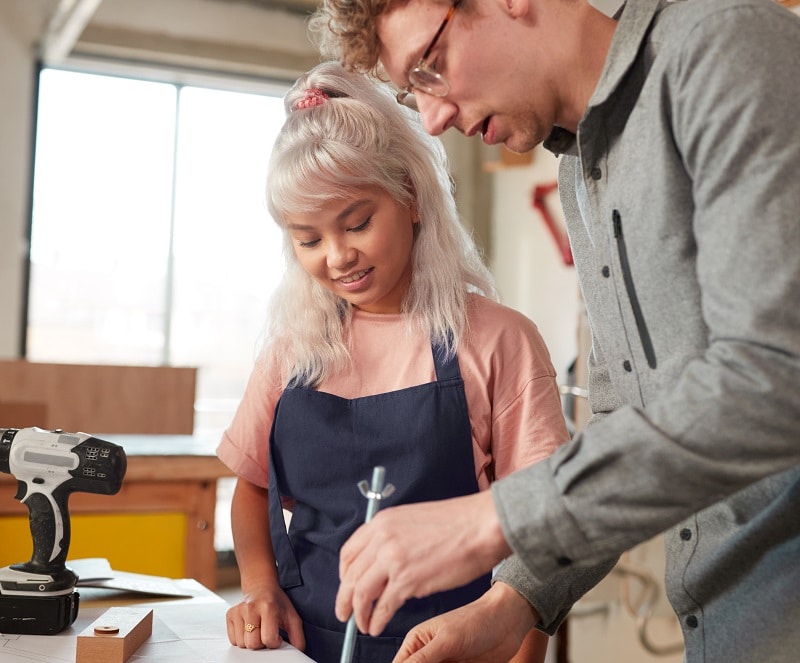In recent years, the term “asset-based” has become increasingly popular in youth development and education lexicons. It marks an important, and arguably long overdue shift toward understanding and intentionally building on students’ strengths and talents, rather than focusing exclusively on their deficiencies.
More often than not, however, calls to take a more asset-based approach in schools situate individual students as the locus of control and change. Individual strengths, experiences, and perspectives are celebrated and built upon.
But our research on social capital suggests that the concept of assets is accurate yet incomplete. The reality is that students’ assets reside not just within, but around them in their networks.
Asset-based networking may sound like something of an oxymoron. After all, traditional “networking” connotes making new connections to open new doors. But new opportunities don’t necessarily need to come from new connections. As schools and nonprofits go about building students’ support and professional networks, paying closer attention to whom their students already know is a powerful but rare practice.
Taking Stock: Getting to know who your students know
Over the past few years, we’ve sought to document if and how a host of organizations that are focused on building students’ networks go about that work. Although there’s exciting progress afoot in the field, organizations collecting and reflecting on data about students’ existing networks are few and far between.
That’s probably because doing so can feel overwhelming and inefficient compared to business as usual. An educator or career coach who integrates her own networks into lessons will be working with a known quantity that may be easier to blend into a lesson or project. Incorporating individuals from students’ own networks can also make programming less predictable; for example, an internship coordinator at a high school who “owns” all of the relationships with employer partners ostensibly can exert greater sway over things like logistics and quality control.
But tapping into students’ existing networks can also mean unlocking latent social capital that most institutions leave on the table. These connections aren’t just plentiful, but they likely have an existing understanding of and trust in students. Moreover, they may be able to offer a far greater diversity of experiences and opportunities than a few employer partners can.
Of course, many schools and programs get to know close family members and friends in their students’ lives. But to truly understand the array of resources in students’ networks, just asking about their closest kin and mentors won’t tell the whole story. Acquaintances—or what sociologists call “weak ties”—are also a powerful source of opportunities (as researchers have found, these looser connections are more likely to contain new information, advice, and opportunities than our strongest ties because they tend to be both more plentiful and more diverse.)
In short, students likely arrive with numerous valuable strong and weak connections spanning their neighborhoods, faith communities, extended families, or jobs. But those relationships rarely are connected and leveraged in a systematic way in support of their educational and career pathways inside of school. Based on our research on promising strategies to flip that script, here are four actions to consider:
1. Explore relationship-mapping and social network-mapping tools to collect and track reliable relationship data.
To fully embrace the idea that students’ assets encompass external relationships and communities in addition to individual traits, schools need better tools to capture reliable data on who students feel connected to in the first place. For example, Harvard University’s Making Caring Common Project lays out a relationship mapping strategy meant to ensure that every student has a strong connection to someone else, especially during these challenging times. The goal of this activity is to systematically identify the positive connections young people have with various adults inside of school, rather than leaving those connections to chance.
Schools looking to identify existing assets should consider engaging both staff and students in relationship mapping. That way, if students can’t identify any trusting relationship, educators and staff can focus their efforts on forging connections with those students. Another tool, social network maps, involve having students fill out a visual map of whom they know across various domains of their lives—such as their households, neighborhoods, workplaces, clubs, and friends—particularly, in dialogue with a coach or educator (this article offers helpful tips on how to engage in those conversations).
2. Help students align their existing networks around their goals.
Fostering students’ support networks shouldn’t happen in a vacuum; instead, asking students to first articulate their goals and then reflect on who in their network might support those goals can lead to more successful, asset-based network building. For example, Beyond 12 is a nonprofit that offers virtual coaching to students from low-income households, first-generation students, and students from historically underrepresented groups. The Beyond 12 curriculum includes a specific core content area focused on “Networking and Building Social Capital” in an effort to map who plays what roles across students’ networks. As part of this module, students fill in a chart detailing specific relationships in their lives with people who can help them accomplish their goals. They reflect on the help they receive from various individuals; how frequently they interact; how formal or informal their interactions are; and “next steps” to continue to strengthen and tap into those relationships in targeted and strategic ways.
3. Harness technology to crowdsource and share students’ connections
Education institutions often invest tirelessly in forming new “partnerships”—with nonprofits, community organizations, and employers—that can expand students’ opportunities. But finding new opportunities and building students’ networks doesn’t always necessitate spending a vast amount of time and energy seeking new partnerships. Taking an asset-based approach could mean brokering new opportunities among existing connections. For example, Big Picture Learning, a national nonprofit that supports internship-based learning high schools, has designed a technology tool called ImBlaze to help schools manage work-based learning contacts and opportunities. At the start of their semester, Big Picture students are encouraged to upload their existing and new connections to local businesses through their families, communities, and other networks. From there, students across the school have visibility into the range of opportunities represented across their entire school community—not just limited to their existing, inherited networks.
4. Fill in market gaps by inventing new strategies, curriculum, and tools.
For any entrepreneurial leaders and investors out there, consider building resources and tools focused on more asset-based approaches to networking. There are already some tools and organizations leading the way: for example, ImBlaze can be used to build out a digital rolodex of students’ connections across a school or district. Other organizations, like Opportunity Network and Social Capital Builders are building curricula and tools that help young people reflect on the social and cultural wealth in their communities. Although these tools and strategies show promise, curriculum and edtech markets remains sorely in need of more innovation toward network-building for students of different ages and for different use cases.
An addendum on network gaps
These four on-ramps to asset-based networking offer important starting points in a nascent field. Still, it bears noting that only relying on existing connections might not equalize or optimize for the networks students ultimately need to get the jobs they want. In research on how young people experience career pathways, many students report finding connections and resources from within their existing networks, but also benefitting from new connections to individuals they might otherwise not meet in the course of jobs or other career experiences. In other words, existing and new assets may be critical to ensuring all young people have options. But without getting strategic in identifying who students already know, the benefits of asset-based networking will be deeply felt opportunity costs that today’s students simply can’t afford.



